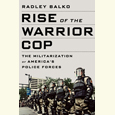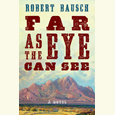Holding a Wolf by the Ears
In his Pulitzer-winning history, The Internal Enemy, Alan Taylor recounts how slaves shaped the War of 1812 and altered the nation’s history
During the War of 1812, about 3,400 slaves from Virginia and Maryland escaped to British warships. In his masterful narrative history, The Internal Enemy: Slavery and War in Virginia, 1772-1832, Alan Taylor situates those runaways in Virginia’s rich, complicated, and tragic history of slavery and freedom.
 Taylor, the Thomas Jefferson Foundation Chair in the Corcoran Department of History at the University of Virginia, is the author of eight books on early American history, including William Cooper’s Town: Power and Persuasion on the Frontier of the Early American Republic, which won the Pulitzer Prize in History, the Bancroft Prize, and the Albert J. Beveridge Award. The Internal Enemy, his most recent book, also won the Pulitzer Prize in History and was a finalist for the National Book Award for Nonfiction. He recently answered questions via email about The Internal Enemy, his forthcoming book, American Revolutions, and his upcoming lecture at the University of Memphis:
Taylor, the Thomas Jefferson Foundation Chair in the Corcoran Department of History at the University of Virginia, is the author of eight books on early American history, including William Cooper’s Town: Power and Persuasion on the Frontier of the Early American Republic, which won the Pulitzer Prize in History, the Bancroft Prize, and the Albert J. Beveridge Award. The Internal Enemy, his most recent book, also won the Pulitzer Prize in History and was a finalist for the National Book Award for Nonfiction. He recently answered questions via email about The Internal Enemy, his forthcoming book, American Revolutions, and his upcoming lecture at the University of Memphis:
Chapter 16: The general student of American history understands how slavery helped shape the Revolutionary War or the Civil War, but few have considered the same question for the War of 1812. How did slaves in Virginia help dictate the course of this war?
Alan Taylor: When British warships sailed into Chesapeake Bay during the War of 1812, the enslaved looked to the British as potential liberators. The Royal Navy captains had orders to take on a very few runaways, exclusively men who could be useful as pilots and guides. But hundreds of runaways—men, women, and children—stole boats to paddle out to the warships and offer their help against the Americans. They pressured the British to become liberators.
Unable to resist that temptation, British naval captains persuaded their superiors to change policy, permitting the recruitment of runaways as sailors, soldiers, guides, nurses, and laundresses. By providing reinforcements, plus expertise on the local landscape and its roads, the newly freed enabled the British to pursue a more aggressive warfare in 1814, culminating in their occupation and devastation of Washington D.C.
Chapter 16: Thomas Jefferson once likened the institution of slavery to holding a wolf by the ears: “We can neither hold him, nor safely let him go.” How did this idea evolve over the course of the late 1700s and early 1800s, and how did it shape the state’s social and political life?
Alan Taylor: White Virginians thought of their slaves as a potential “internal enemy” that could assist any invader in wartime. The enslaved had assisted British troops during the Revolution, and they did the same during the War of 1812—they believed that Britons offered them better prospects for freedom than did their American masters.
 Chapter 16: When war came to the Virginia coast, slaves faced a host of choices. What guided their decisions? Despite all the roadblocks to real freedom, could they actually help shape their own destinies?
Chapter 16: When war came to the Virginia coast, slaves faced a host of choices. What guided their decisions? Despite all the roadblocks to real freedom, could they actually help shape their own destinies?
Alan Taylor: Escaping to a British warship was hard and dangerous, so most of the enslaved dared not make the effort. Most of the runaways lived on farms and plantations beside the navigable rivers of Chesapeake Bay, where they could see and hear passing warships. But most of the enslaved lived and worked in the interior, far from the ships. Even those who lived near the waterways paused if they could not assemble enough of their kin to make the attempt, for they valued their own families and communities.
Chapter 16: How, ultimately, did the War of 1812 shape the future of American slavery?
Alan Taylor: By giving priority to the invasion of Canada, the federal government failed to defend the American coast against British naval attacks, which were particularly effective along the shores of Chesapeake Bay. Many Virginians felt disgusted by the federal neglect. That hostility then hardened them into a states’-rights position, particularly in defense of slavery. After the war, Virginia shifted away from nationalism and toward a more Southern identity.
Chapter 16: The Internal Enemy is a local history, focused on a single region, with case studies that examine the history of particular plantations. But it is also a global history, emphasizing ideas and strategies shaped by the larger trajectory of the British Empire, while also tracing the lives of freed slaves to Nova Scotia and Trinidad. Does this approach signal broader trends among historians of early America?
Alan Taylor: American historians increasingly seek to tell their local and national stories in a more continental, trans-oceanic, and even global context. This encouraged me to seek the connections between the runaways and developments in the wider British Empire and their own post-war havens in Nova Scotia and Trinidad.
Chapter 16: Your new book, American Revolutions, will be published soon. Does this big narrative history of the era have intellectual roots in your previous books? How do you pull such a broad range of themes, events, and peoples into a coherent story?
Alan Taylor: I especially admire historians who can work between different scales of analysis, from the personal to the local, national, and international. I attempt to do this in American Revolutions, which examines the era of the American Revolution (from the 1750s into the early nineteenth century) on the scale of the North American continent, including native peoples, Canada, Spanish America, and the Pacific shores in the story.
Chapter 16: Your upcoming talk at the University of Memphis is entitled, “The Economy of Violence: The American Revolution in the South.” What do you mean by “the economy of violence?” Why is it a lens into the war in the South?
Alan Taylor: The “economy of violence” refers to the British attempt to intimidate white Southerners by appearing to mobilize Indians and runaway slaves for war. Instead, those attempts tended to unite whites in support of the revolution. It also hardened their racial identity as whites and their animus against natives and African Americans.

Aram Goudsouzian chairs the history department at the University of Memphis. His most recent book is Down to the Crossroads: Civil Rights, Black Power, and the Meredith March Against Fear.





